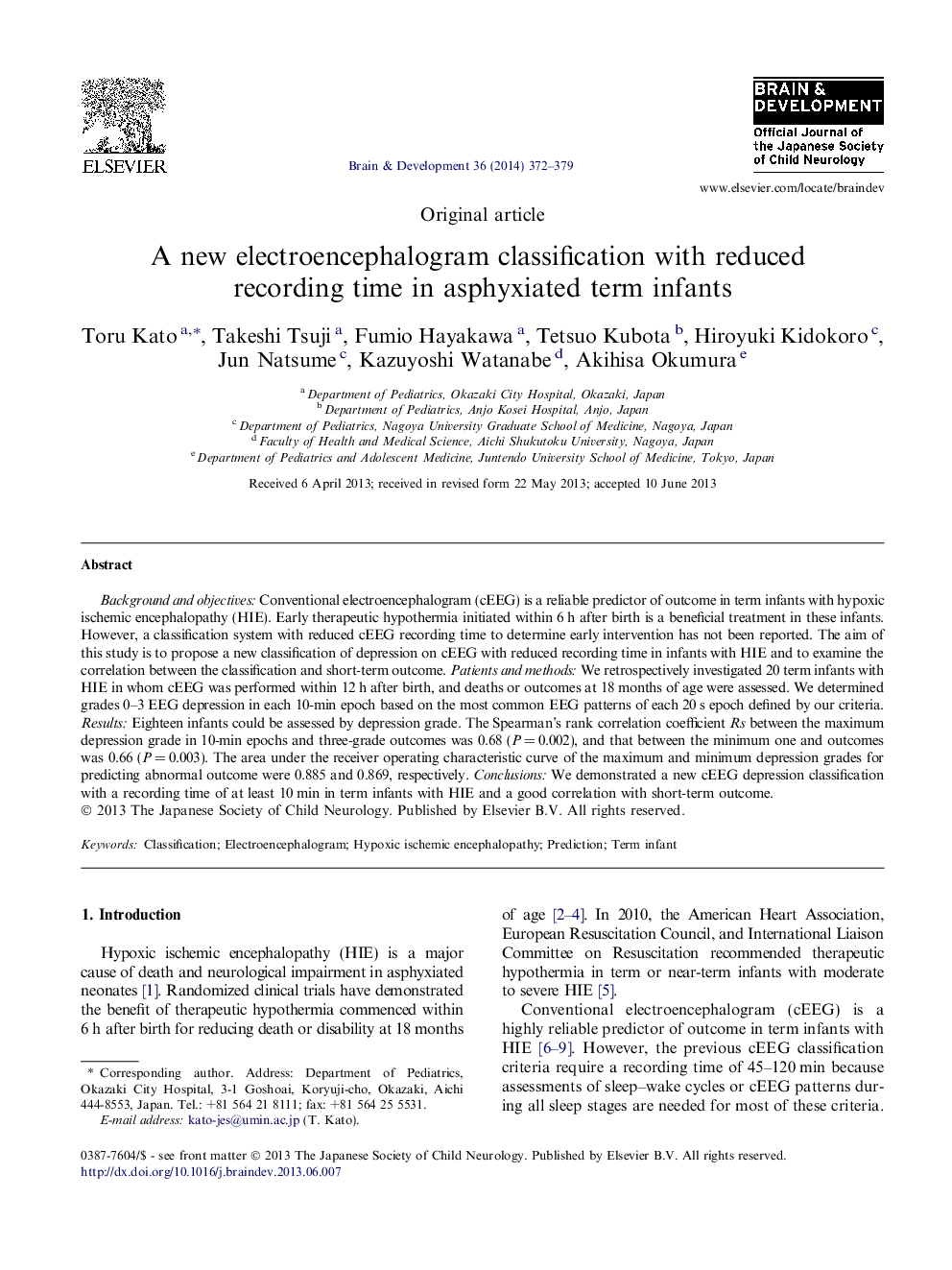| Article ID | Journal | Published Year | Pages | File Type |
|---|---|---|---|---|
| 3037016 | Brain and Development | 2014 | 8 Pages |
Background and objectives: Conventional electroencephalogram (cEEG) is a reliable predictor of outcome in term infants with hypoxic ischemic encephalopathy (HIE). Early therapeutic hypothermia initiated within 6 h after birth is a beneficial treatment in these infants. However, a classification system with reduced cEEG recording time to determine early intervention has not been reported. The aim of this study is to propose a new classification of depression on cEEG with reduced recording time in infants with HIE and to examine the correlation between the classification and short-term outcome. Patients and methods: We retrospectively investigated 20 term infants with HIE in whom cEEG was performed within 12 h after birth, and deaths or outcomes at 18 months of age were assessed. We determined grades 0–3 EEG depression in each 10-min epoch based on the most common EEG patterns of each 20 s epoch defined by our criteria. Results: Eighteen infants could be assessed by depression grade. The Spearman’s rank correlation coefficient Rs between the maximum depression grade in 10-min epochs and three-grade outcomes was 0.68 (P = 0.002), and that between the minimum one and outcomes was 0.66 (P = 0.003). The area under the receiver operating characteristic curve of the maximum and minimum depression grades for predicting abnormal outcome were 0.885 and 0.869, respectively. Conclusions: We demonstrated a new cEEG depression classification with a recording time of at least 10 min in term infants with HIE and a good correlation with short-term outcome.
